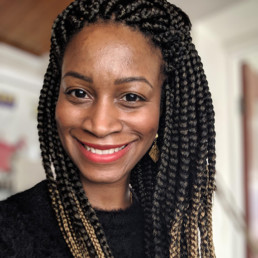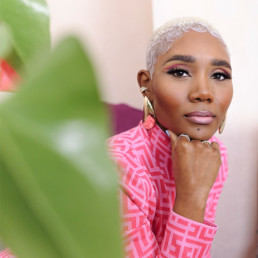Supporting our neurodivergent girls with their Relationships and Sex Education

Written by Alice Hoyle
Alice Hoyle is a Wellbeing Education Consultant specialising in Relationships Sex and Health (RSHE) Education and Sensory Wellbeing with a special interest in Neurodiversity and girls. She has worked as a teacher, PSHE lead, Youth Worker, LEA Education adviser and now works with local authorities, academy chains, universities and schools. She has authored 3 very different books on mental health, RSHE and sensory wellbeing.
As an education consultant of over 20 years experience in Relationships Sex and Health Education (RSHE), and a neurodivergent (ND) mum of ND daughters, I am passionate about supporting this group of girls with their RSHE. So here are some of my top tips for doing this work:
- Support them to practise tuning into their guts & listening to their ‘spidey senses’
Teach girls to tune into their own bodies as much as possible, recognising that any issues with interoception/ alexithymia may mean this will need constant revisiting. The emotion sensations feelings wheel may help here. Use the model of ‘comfort, stretch, panic’ from our book Great Relationships and Sex Education to support understanding when to speak out and get help and who their trusted adults are.
- Embed the Ethical Relationships Framework across everything
Use this ethical relationships framework to help the girls understand what they should expect from their relationships from Moira Carmody and Jenny Walsh (page 11 and also in Great RSE).
- Taking Care of Me (meeting your own needs)
- Taking Care of You (balanced with meeting the needs of the other person)
- Having an Equal Say (making sure there is no coercion, control or power imbalances)
- Learning as we go (nobody is born perfect at relationships, there will be periods of rupture and repair or sometimes ending)
Constantly revisit and reinforce these simple ‘rules’ for ethical friendships and relationships so they become embedded across their interactions.
- Explore ND specific nuances to ethical relationships
To build on this ethical relationships work, discuss masking and how we should feel safe enough and able to unmask with people we care about and trust and what that could look like (Taking care of me and you). Explore verbal and non-verbal ways of communicating our needs as well as how we can learn to tune into other peoples verbal and non-verbal cues. Explore the double empathy problem as a challenge for Neurotypical (NT) and Neurodivergent (ND) interactions. (Having an equal say and learning as we go).
- Unpick social norms and expectations particularly around gender.
Challenge gender stereotypes and celebrate what it means to be a neurodivergent female. The Autism Friendly Guide to Periods, Different not Less and The Spectrum Girls Survival Guide are fab resources to have in the room for students to flick through if in need of a diversion if the main subject of the lesson becomes overwhelming! Use resources such as this Padlet , the Autistic Girls Network and Girls have autism too.
- Deconstruct Idioms and use clear language
There are many idioms around relationships and sex that can be confusing for ND young people; ‘Voice breaking’; ‘bun in the oven’; ‘Netflix and chill’; ‘don’t give sleeping people tea’. You will need to do some research into the current ones for your cohort and help your group deconstruct them so they can ascertain the real meaning. Use correct words and not euphemisms for body parts. It is especially important to explain what a vulva is (a terrifying number of folk think it’s a type of car!).
- Use Games and Objects to increase engagement and practise communication skills.
Use low pressure talking games like Feel good jenga (sentence starters on jenga blocks which works phenomenally well with ND pupils) or Attractive and Repulsive qualities in a magnet game to for discussions in low stakes fun ways. Build in opportunities for Object Based Learning, by getting models you can handle means the girls can really understand things in a more tangible way.
- Teach consent in direct ways.
Avoid using the “tea and consent video” as it is an unhelpful confusing analogy. There are lots of different ways you can educate about consent. Parents and Teachers often don’t like hearing ‘No’ and societal expectations teach us that girls are supposed to be agreeable and passive. Therefore, it can be really helpful to go back to basics with teaching the 3 part No and the 3 part responding to a No.
- Saying No: Firm body language, unsmiling facial expression, and a loud, clear “No.”
- Hearing No: Stop immediately, check in with the person, and suggest an alternative activity.
You can have a lot of fun practising saying and hearing NO and exploring role plays and social stories to build confidence with asserting boundaries! There is of course an important caveat that if a No is ever overridden and an assault happens it is not the victim’s fault, blame lies with the perpetrator, and there is always a trusted adult (help the girls identify who they are) who can help.
- Understanding the senses can support understanding of sensuality and pleasure.
Research shows that good sex tends to be safer sex. Where appropriate (depending on the age and stage of development of the young woman) you may want to include safe conversations about forms of intimate self touch, (this could be stimming, sensory seeking or masturbation) as well as conversations about sensuality. More generally we need to do much more work on supporting ND girls to understand and advocate for their own sensory needs. Developing their sensory autonomy will go a long way in supporting their understanding of consent and bodily autonomy in relationships.
For more help doing this work then please get in touch via my website www.alicehoyle.com. Good luck!
Mirrors, Windows and Sliding Doors: A Metaphor for the Diverse Curriculum

Written by Hannah Wilson
Founder of Diverse Educators
In the dynamic landscape of education, the curriculum serves as the foundation for shaping young minds. As we strive for a more inclusive and representative educational experience, the metaphor of Mirrors, Windows, and Sliding Doors offers a powerful framework for curriculum development. This metaphor, introduced by Dr Rudine Sims Bishop, encapsulates the essence of diversity, equity, inclusion and belonging within educational content, emphasising the importance of reflection, observation, and engagement for all learners.
Mirrors: Reflecting Students’ Own Lives
Mirrors in the curriculum are essential for students to see themselves – their cultures, identities, and experiences – reflected in what they learn. When students encounter stories, histories, and perspectives that resonate with their own lives, they feel validated and recognised. This reflection fosters a sense of belonging and self-worth, which is crucial for their overall development and academic success.
For curriculum specialists and subject leaders, this means incorporating diverse voices and narratives across all subjects. For example, in literature, selecting texts from a variety of authors who represent different backgrounds ensures that every student can see themselves on the page. In history, presenting a more inclusive perspective that acknowledges the contributions and experiences of marginalised groups and provides a fuller understanding of the past.
Windows: Viewing Others’ Lives
Windows offer students a view into the lives and experiences of people different from themselves. Through these glimpses, learners develop empathy, understanding, and a broader perspective of the world. Windows help dismantle stereotypes and prejudices, fostering a more inclusive mindset among students.
To create these windows, educators need to curate a curriculum that includes global perspectives and diverse narratives. In geography, this might involve studying various cultures and their relationships with the environment. In science, discussing contributions from global scientists highlights the universal nature of discovery. Providing opportunities for students to engage with content that portrays different lifestyles, beliefs, and challenges cultivates an appreciation for diversity and interconnectedness.
Sliding Doors: Engaging and Interacting
Sliding doors represent opportunities for students to enter into, and interact with, different worlds. This element encourages active engagement and personal reflection. When students can metaphorically ‘step into’ the experiences of others, they gain deeper insights of different identities and build meaningful connections.
Interactive projects, collaborative learning experiences, and role-playing activities serve as sliding doors in the curriculum. For instance, a history project where students re-enact historical events from multiple perspectives can provide profound learning experiences. In literature, writing assignments that ask students to create narratives from the viewpoint of characters unlike themselves can deepen empathy and understanding.
Integrating Mirrors, Windows, and Sliding Doors
To integrate these concepts effectively, curriculum specialists and subject leaders must be intentional and thoughtful in their approach. This involves:
- Reviewing and Revising Existing Curriculum: Conducting thorough audits to identify gaps and biases. Ensuring that the content reflects a diverse range of voices and perspectives.
- Collaborating with Diverse Communities: Engaging with parents/ carers, community leaders, and organisations to gather input and resources. This collaboration can enrich the curriculum with authentic, representative materials.
- Providing Professional Development: Equipping teachers with the skills and knowledge to deliver an inclusive curriculum. Training on cultural competence, unconscious bias, and inclusive teaching strategiesl.
- Utilising Technology and Media: Leveraging digital resources to access a wider array of content. Using online platforms, virtual exchanges, and multimedia can bring diverse voices and experiences into the classroom.
- Encouraging Student Voice and Choice: Empowering students to share their stories and choose projects that reflect their interests and identities. Designing student-centred approach fosters a sense of ownership and relevance in their learning.
The metaphor of Mirrors, Windows, and Sliding Doors provides a robust framework for creating an inclusive and representative curriculum. By reflecting students’ identities, offering insights into others’ lives, and facilitating active engagement, educators can cultivate a learning environment that values diversity, promotes equity, centres inclusion and builds belonging. As curriculum specialists and subject leaders, embracing this metaphor not only enriches the educational experience but also prepares students to thrive in a diverse and interconnected world.
New Official Study Guide for GCSE Set Text Leave Taking by Winsome Pinnock

Written by Samantha Wharton
Samantha is a seasoned educator from East London, with ancestral roots tracing back to the Caribbean nations of Antigua and Guyana. She brings a wealth of academic achievements, including a degree in Communications and Media from Brunel University, a PGCE in English and Drama from the Institute of Education at University College London, and an MA in Black British Literature from Goldsmiths University.
A new official study guide for Leave Taking by Winsome Pinnock, authored by educators Samantha Wharton and Lynette Carr Armstrong, brings a fresh approach to GCSE English literature, enhancing the teaching and learning experience for GCSE English Literature students and teachers.
Samantha Wharton and Lynette Carr Armstrong bring a wealth of expertise from over 50 years of combined experience in education. As co-writers of this study guide, they have meticulously crafted an in-depth exploration of Leave Taking, ensuring that it delves into the nuances of the text with precision and clarity.
But what sets this study guide apart is its academic rigour and its authors’ lived experience and insight. As children of the Windrush generation, Samantha and Lynette possess a profound understanding of the worlds depicted in Pinnock’s play. Their lived experiences and living memories enrich the guide, providing readers with authentic perspectives that resonate with the characters and themes of Leave Taking.
Crucially, Samantha and Lynette had the privilege of consulting with Winsome Pinnock herself during the development of this guide. Pinnock’s invaluable commentary is woven throughout the text, offering readers a rare glimpse into the playwright’s mind and enriching their understanding of her work.
Leave Taking is not just another set text—it is a vital piece of literature amplifying Black voices and sharing insights into the Black British experience. Samantha Wharton and Lynette Carr Armstrong emphasise the importance of showcasing these narratives through Black voices with shared experiences. In a world where the Black experience has been historically erased, texts like Leave Taking must be unpacked and explored with sensitivity and nuance.
This study guide is more than just a pedagogical tool—it is a labour of love, insight, and experience. Samantha has taught Leave Taking at St Angela’s School in London, where staff and students have met it with enthusiasm. The diverse cohort of teachers at St Angela’s have thoroughly enjoyed teaching the text, while the students are excited to see modern characters that reflect their own experiences.
The release of the official study guide for Leave Taking by Winsome Pinnock marks a significant milestone in GCSE English literature. With Samantha Wharton and Lynette Carr Armstrong at the helm, educators and students can embark on a journey of discovery that celebrates Black voices, amplifies lived experiences, and enriches the educational landscape for generations to come.
The duo are committed to supporting teachers in implementing Leave Taking into the classroom. They will offer future training experiences, including workshops and seminars, to provide educators with the tools and insights to effectively teach this text. These training sessions will cover various aspects of the play, including thematic analysis, character studies, and classroom activities.
To inquire about future training opportunities or to reach Samantha Wharton and Lynette Carr Armstrong for further information on the study guide, educators can contact them via email at samantha.wharton@gmail.com and Lynettedcarr@hotmail.com. They are eager to collaborate with schools and educational institutions to enhance the teaching and learning experience of Leave Taking. They are available to answer any queries or provide additional support as needed.
The study guide has received recognition from Lit In Colour, a prominent platform championing diverse voices in literature. It was endorsed in their latest newsletter and featured in The (incomplete) Lit In Colour list, a curated collection of essential resources for educators looking to include diverse perspectives in teaching. This recognition reinforces the guide’s reputation as a valuable tool for promoting inclusivity and representation in education, making it indispensable for educators passionate about diversity and equity.
The official study guide for Leave Taking by Winsome Pinnock can be found through various channels. It is available on the Nick Hern Books website, the same publisher as the play, ensuring authenticity and reliability. Furthermore, the guide can be purchased on popular online platforms like Amazon!
The study guide and texts are available here:
https://www.nickhernbooks.co.uk/leave-taking-gcse-study-guide
https://www.nickhernbooks.co.uk/leave-taking-bundle-deal
https://www.amazon.co.uk/Leave-Taking-GCSE-Student-Guide/dp/1839041366
Press coverage about the play:
‘The godmother of Black British playwrights’ – Guardian on Winsome Pinnock
Guardian ‘Three decades since its debut Winsome Pinnock’s pioneering portrayal of the lives of black Britons feels shockingly contemporary… Pinnock was a pioneer and her piece still hits homethrough its often shocking honesty about the hazards facing black people in Britain’
Time Out ‘A devastatingly powerful story of a British-Caribbean family… whyWinsome Pinnock’s play isn’t on the English Literature syllabus is a mystery to me, given its shocking contemporary relevance… this play warms and devastates’
Two generations. Three incredible women. Winsome Pinnock’s play Leave Taking is an epic story of what we leave behind in order to find home. It premiered in 1987, and was revived at the Bush Theatre, London, in 2018, in a production directed by the Bush’s Artistic Director, Madani Younis.
Five reasons why schools should teach Princess & The Hustler at GCSE

Written by Jessica Tacon
Jessica Tacon is second in charge of the English Department at City of London Academy Highgate Hill and is a member of NATE’s (National Association for the Teaching of English) ‘Reviewing Literature’ working group. She created The Right Writing campaign which aims to improve racial diversity in English Education.
In September 2022, AQA launched ‘Spark something’ to inspire and support English teachers to teach their new set texts. To improve the diversity and inclusion of their English Literature GCSE offer, particularly racial diversity and inclusion, AQA introduced a new novel, My Name is Leon by Kit de Waal, as well as a new poetry cluster and two new plays: Leave Taking by Winsome Pinnock and Princess & The Hustler by Chinonyerem Odimba.
I was lucky enough to be asked by BBC Bitesize to become their lead writer on Princess & The Hustler. This is Odimba’s heart-warming and heart-wrenching story about Princess, a 10-year-old girl, and her family living in Bristol between Christmas 1962 and September 1963. In the play’s opening scene, her father, The Hustler, returns after being away for a long time. Throughout the plot, Princess dreams of being winner of Weston-super-Mare’s Beauties of the West contest; Odimba says that part of her motivation for writing the play was to allow young Black girls to feel “beautiful” as well as “strong and capable”. The story is set against the backdrop of the Bristol Bus Boycott of 1963. At this time, the Bristol Omnibus Company was upholding a colour bar, which meant that they refused to hire Black or Asian bus drivers or conductors. The people of Bristol protested against this racial discrimination by refusing to ride the buses.
After the initial research stage, BBC Bitesize asked me to write revision-focused content for their website on the text. By this point I was already in love with Princess as well as Odimba’s story of family, struggle, and self-love. Below are five (of many) reasons why I believe schools should absolutely be teaching this text as part of the AQA modern text section of the literature GCSE.
Reason 1: Young people need stories about people like them fighting for what they believe in
From early in the play, Wendell Junior, Princess’ older brother, is a devoted fighter of the cause of the Bristol Bus Boycott. He attends marches and speaks passionately about the need for change. Young people are the future, and this important aspect of the story can remind them just how much power their voices and actions can have.
Reason 2: The play communicates important lessons and messages
The play, in very nuanced ways, teaches important lessons that will genuinely help students to understand themselves and to navigate the world around them. One example is the colourism that Princess experiences throughout the book which is often very subtle. There is an instance where her lighter skinned half-sister, Lorna, is invited to a birthday party by a girl at school, but she is not. Odimba does not explicitly point out that this is the reason why Princess is not invited, but the reader is encouraged to infer this through careful hints. This is an important lesson about how prejudice and discrimination are often insidious. However, this in no way means that these instances are any less harmful. This will show students that not all prejudice has to be explicit and obvious to be wrong and painful.
Reason 3: The historical events are part of England’s history
Princess & The Hustler sheds light on a very important period in England’s history. It absolutely should be taught in a specification which aims to help young people to “appreciate the depth and power of the English literary heritage”.
Heritage does not happen and is not learnt about in a vacuum; teaching texts about England’s heritage, whether showing aspects of the country in a good or bad light, are an asset to achieving the aforementioned aim.
Reason 4: The play covers a variety of themes
I was reluctant for any of these reasons to be about the exam itself. However, of course, it would be somewhat irresponsible to teach texts to students at a GCSE level with no consideration as to how it will help them to succeed in their exams (and, in lots of ways, consequently their future). That said, Princess & The Hustler covers a variety of themes that offer opportunities for students to analyse in detail. Themes like family, love, conflict, prejudice, and power are all richly peppered and embedded throughout. Diversity has become somewhat of a buzzword. And yet, this play alone offers true diversity in the sense that in such a small story it covers so much.
Reason 5: Young people need stories about self-love
We are living in a world of social media and, heartbreakingly, growing numbers of mental health issues among teenagers. It seems necessary here to celebrate the fact that at its very core, this is a story about a girl who, against a lot of external barriers, learns to love herself.
Mavis, Princess’ mum, says to her when she is struggling with her self-image:
“Phyllis James you listen, and you listen good!//Whether your hair long or short. Skin good or bad.//Us…//Us…girls and women with our skin dark as the night, every shade of brown, glowing like fresh-made caramel, or legs spindly like a spiders we are everything that is beautiful on this earth.//And you…you the prettiest of them all because you are my girl”.
I think we can all agree that this is absolutely beautiful advice for young people to be exposed to.
For more information about the BBC Bitesize revision resource to accompany Princess & The Hustler, please visit www.bbc.co.uk/bitesize
Using stories and voices to combat the narrative of antisemitic hate: opportunities afforded by the Curriculum for Wales.

Written by Jennifer Harding-Richards
Jennifer is currently on secondment working as RVE and RSE adviser to schools across three local authorities as well as RVE adviser to the SACRE’s in each of the three authorities. She is passionate about education and especially keen on ensuring that social justice and equity are at the heart of all RVE and RSE curriculum planning, development and pedagogy within the Curriculum for Wales. She is the RE Hubs lead for Wales and a member of the steering committee for the Welsh Jewish Heritage Centre. She has previously worked as a freelance educator for the Holocaust Education Trust and has an MA in World Religions.
According to a recent report (ref 1), there were three times the numbers of antisemitic incidents reported across Wales in 2023, compared with 2022. The incidents which included threats, abusive behaviour and assault, represent a rise of 338%.
Wales is the first, and so far, the only home nation to have made the teaching of Black, Asian and Minority Ethnic histories a mandatory element of their curriculum and are committed to being an anti-racist nation by 2030. The anti-racist action plan (ref 2) includes the vision, values, purpose and strategies needed to support this and understandably, education has a large role to play.
The Curriculum for Wales, introduced in 2022, empowers individual schools to craft and cultivate their own unique curriculum. The aim of each school’s curriculum is to nurture students who are:
- ambitious, capable learners, ready to learn throughout their lives
- enterprising, creative contributors, ready to play a full part in life and work
- ethical, informed citizens of Wales and the world
- healthy, confident individuals, ready to lead fulfilling lives as valued members of society.
As we work towards an anti-racist nation, we are reminded about the power of education. Nelson Mandela’s infamous quote ‘education is the most powerful weapon with which you can change the world’ really resonates with the vision that we have in Wales. We know that far-right philosophies and beliefs are infiltrating mainstream culture, and our children are intoxicated with the images, speeches and behaviour of those that preach such ideologies. As educators, we have the responsibility to counteract such narratives and use our privileged position as curriculum designers and teachers to support our learners to become ethical and informed citizens, able to not only take their place within our diverse society, but to contribute and make positive change.
Wales has a rich, diverse and multi-cultural history. We have a rich legacy of inclusive education as well as a welcoming acceptance for the many diverse cultures and followers of faith that have made Wales their home. The story is told of how some of the first Jews in Wales, arriving in Merthyr Tydfil in the eighteenth century, peered through the windows of some local homes, and on seeing a Bible in every one, decided that this was a place where they could stay and be welcomed.
Using Welsh Jewish stories and voices within our school curricula, whilst obviously not eradicating antisemitism in its entirety, will help develop a generation of young people who are able to humanise and personalise others, avoiding stereotypes and challenge the narrative of the media and those with the loudest voices. We want our children to become ethical and informed citizens, capable of independent thought and able to critically engage with the toxicity of hate that surrounds us on a daily basis.
There are so many Welsh Jewish stories that deserve to be told, individuals who have helped shape our society and made a positive impact on others. Leo Abse, for example, a social reformer, and Labour MP for 30 years. He was influential in the shift in laws and norms towards the acceptance of homosexuality and divorce. We want our pupils to engage with discussion around his ideals and values and how they have changed Wales for the better. His aunt, Lily Tobias, had a multilingual childhood in Ystalyfera which fostered in her a political activism, a sense of social justice and a determination to try and change the world. Her legacy cannot ever be underestimated. Kate Bosse Griffiths, escaped Nazi Germany and along with her husband, became a founding member of ‘Cylch Cadwgan’, an organisation that welcomed and celebrated writers, poets and pacifists. Her own writing focused on her feminist ideals and sense of spirituality. She made a huge difference to those around her.
In working towards an anti-racist Wales, in celebrating and recognising cynefin (ref 3) and using our subsidiarity and autonomy to design our own bespoke curriculum for our learners, we have a real opportunity to use stories and voices to challenge stereotypes, antisemitic tropes and narratives of hate.
References
‘We’ve not seen this since the Holocaust’: Antisemitism in Wales up by 300% after outbreak of war:
Anti-racist Wales Action Plan
https://www.gov.wales/anti-racist-wales-action-plan-contents
‘cynefin’
A Welsh word for which there is no direct translation. It refers to the ideas of habitat and a sense of rootedness, It describes the environment in which one is naturally acclimatised.
Diversity in the Curriculum: The Vital Role of SMSC Subjects

Written by Laura Gregory-White
Laura is an RE Regional Advisor for Jigsaw Education Group. She has over 15 years experience as an educator and curriculum lead across Primary and Secondary.
In today’s pluralistic society, where diversity is a fundamental part of who we are, conversations around diversity in schools and the curriculum are increasingly important. Subjects like Religious Education (RE) and Personal, Social, Health, and Economic Education (PSHE) are vital tools in our curriculum offering. Investing in these subjects, invests in our children and young people’s successful development of the skills and knowledge that help to navigate the complexities of our diverse world with empathy, understanding, and a commitment to social justice.
In Primary schools, where all the teaching staff will have an impact on curriculum development, it is crucial that we are giving them the necessary time and expertise to enable this. From the teachers developing and delivering the individual lessons, the subject leads with oversight for the entire curriculum journey, to the senior leaders who set the values that underpin curriculum design within a school. We all share the responsibility of designing curriculum that not only imparts knowledge but fosters a sense of belonging and inclusivity preparing our children to become global citizens. This journey begins with a deliberate and conscious approach to curriculum design. Every decision we make, from the voices we amplify to the resources we use, must reflect the diversity of human experience.
When facilitating discussions with RE subject leads on this topic, we speak about the implicit and explicit features of the curriculum. The implicit being those decisions we make as curriculum designers about what we include and represent. It means asking ourselves critical questions: What perspectives are included in our syllabi? Whose voices are being centred? Are we offering a diverse range of representation? These considerations extend beyond the mere content of our subjects; they seep into the language we use, the images we present, and the values we share. These decisions may not be explicitly obvious to the children in our lessons, but it frames a journey for them that better represents the world they are growing up in. Without this careful consideration, we can unintentionally establish an unconscious bias or reinforce stereotypes.
Alongside these implicit considerations is the explicit curriculum, where we dedicate time in lessons to directly address issues of diversity, equity, inclusion, justice, and belonging (DEIJB). It’s about more than just ticking boxes; it’s about fostering meaningful dialogue, challenging biases, and nurturing a culture of respect and understanding. SMSC subjects provide the structured opportunities for students to explore complex societal issues, interrogate their own beliefs and biases, and develop the critical thinking skills necessary to navigate an increasingly interconnected world. For staff to feel confident in leading these discussions, we need to support the ongoing development of their knowledge and understanding of these issues as well as the ways in which safe learning environments can be established, and discussion and debate can be managed. This will support them in feeling confident to plan in these explicit curriculum opportunities for our children.
This is not a small job or short conversation with a defined end point. This is ongoing work, and it should be contextual. It is important that schools support their staff to engage with this through investment in high-quality resources, providing the time and opportunity for evaluation and review, and dedicating time to ongoing learning and development for staff.
In a world dominated by technology, AI, and algorithms, education needs to do more than impart knowledge. It must nurture empathy, compassion, and a sense of collective responsibility. To achieve this, we must elevate and enhance subjects like RE and PSHE. They are essential components of a well-rounded education that prepares students to navigate the complexities of the modern world.
Harmony in Heritage: Sharlene-Monique Unveils 'A New Life' For World Book Day

Written by Sharlene-Monique
Sharlene-Monique is a London based singer-songwriter, author and broadcaster. She is known as a versatile, passionate, authentic, collaborative creator and performer. Her three concept projects Destiny, Perspectiveand Raw & Honest Love combine evocative, soulful vocals with deeply inspiring songs of empowerment, love and self-acceptance with music to move and soothe the soul and spirit. As an independent artist and lead vocalist Sharlene-Monique has toured widely in Europe including as a support act for a 15 date UK tour with the pop legend Gabrielle.
Renowned Singer-Songwriter-Broadcaster Sharlene-Monique is set to release her second book, A New Life, a heart-warming picture story celebrating the hope, courage, and determination of the Windrush generation. Scheduled for release on Tuesday, March 5, 2024, for World Book Day. Sharlene-Monique navigates the loss of her grand-parents by sharing their inspiring journey in A New Life. The book recounts the true story of Winston and Mavis, who, in 1958, embarked on a courageous journey from Jamaica to London, laying the foundation for a new life for their family.
The experiences of their great-granddaughter, Tahlia, unfold as a poignant narrative, resonating with young readers aged 3-7. It is made all the more special by the viral TikTok video that captured the spirited dance of Sharlene-Monique’s 90-year-old grandparents, viewed over 500,000 times across multiple social media platforms.
A New Life stands as a valuable resource for children, offering insights into the Windrush generation’s experiences. It sparks conversations about family stories, resilience, and the passing down of talents and interests through generations. Serlina Boyd, founder of Cocoa magazine, praises the book as “a beautiful picture book that tells the story of the brave arrival of Tahlia’s Great-Grandparents embarking on their new life in Britain. A wonderful read for the whole family.”
Sharlene-Monique is known for; her heartfelt song ‘Thank You’, released in June 2023 to commemorate the 75th anniversary of the Windrush generation which continues to make waves and was featured on ITV, her recent hosting of the Melanated Stories documentary series on TBN UK and a supporting role in the 15-date tour with UK pop legend Gabrielle showcase her multifaceted talents. Sharlene also continues to sing with the Kingdom Choir since their unforgettable performance at the 2018 Royal Wedding in front of a global televised audience of 2 billion people. With a background in education and as an award-winning children’s choir conductor, Sharlene-Monique adds depth to her artistic endeavours.
Reflecting on the book, Sharlene-Monique shares, “When I shared the video of my grandparents dancing, I had no idea the response would be in the thousands, it brought so much joy to people. This book will ensure their legacy will live on for many years to come, and I am so proud of that.”
A New Life: Available for pre-order now via sharlenemonique.com
Available at amazon.co.uk Tuesday, March 5, 2024
For interviews and more info, please contact sharlenemoniq@gmail.com
Facebook | Twitter | Instagram | TikTok| Website
Observations on the implementation of Relationships, Sex, and Health Education (RSE) in an English Primary School

Written by Alex Baird
they/them
Before moving to the Higher Educator sector seven years ago, I worked in various schools for over twelve years, latterly as Director of Sport. At the University of Bedfordshire I am a Senior Lecturer in Sport and Physical Education, an EDI Lead, and the Vice Chair of the LGBTQ+ Alliance staff network. I have just finished an EdD at UCL and the research I write about here constituted my EdD thesis.
My research took place in a primary school in Greater London during the summer term of 2021, just as Relationships and Health Education (including the new LGBT content) had become mandatory. At this time, Covid-19 restrictions were lessening though some protocols were still in place and the effect of lockdowns on both pupils and staff was evident. The school has no religious affiliation but the majority of pupils are Muslim, with a high proportion of English as an additional language (EAL) learners and higher than (the national) average of pupils receiving free school meals (FSM). The research was designed to appreciate how teachers feel positioned and work alongside them to create and teach an inclusive and effective RSE curriculum. Participants included five (non-LGBT identifying) females from the school who held a range of positions, roles, and experience but had all previously taught RSE and were currently teaching in Key Stage 2. Participants were asked to reflect upon RSE and the school culture via semi-structured online interviews. RSE lessons and other subject lessons were observed. Teachers’ reflections of lessons were gathered after observation through an informal discussion.
In interviews teachers expressed a commitment to a rights-based approach in RSE and highlighted the value lessons offered to facilitate dialogue with pupils. Lesson observations revealed a cautious approach to the age at which certain topics (e.g. puberty and conception) were covered and when these topics were covered, dialogue did not deviate from the purchased curriculum PowerPoint slides. The culture and routines of RSE lessons closely resembled other subject lessons observed, that is pupils engaged and valuing the subject, generally sitting in their allocated class seats but the authority and attention remaining on the teacher at the front of the class. Teachers wanted to offer fixed, clear and definitive truths, reinforcing good behaviour and deeming some pupils’ questions as inappropriate. Teachers remained uncertain about what personal opinions they could express whilst still adhering to professional conduct. Lessons which were only 45 minutes in length, shorter than Mathematics and English lessons observed, left teachers often hurrying the pace to try to cover the content. Lesson observations highlighted that gender norms are still being powerfully reinforced including the use of gender stereotypes in scenarios and segregated sex education lessons which send these messages overtly and covertly to pupils.
In light of the current heated and polarising debates surrounding LGBT lives in the UK, I would like to stress my call to rethink how RSE is taught should not be taken to mean it should not be taught. A fuller range of pedagogical approaches that include a critical and postmodern orientation are required to recognise pupils’ agency, their pre-existing knowledge, their emotions, and to the likely presence of pupils in LGBT families and pupils who are or may come to identify as LGBT. Effective RSE remains dependent upon schools providing sufficient training for staff, listening to pupils, and communicating effectively with all parents/carers to address misconceptions or issues. Actualising and normalising LGBT themes needs to go beyond merely a bullying discourse to seek to critique broader school culture and practices.
A portrait of the teaching of the British Empire, migration and belonging in English secondary schools

Written by Dr Jason Todd
Jason is a Departmental Lecturer at the Department of Education at the University of Oxford and currently leads the PGCE History programme. Before joining the University of Oxford, he taught history for 19 years in various London state schools, including time as an Assistant Headteacher in a Special Needs school.
I am working on a research project aiming to provide an empirical portrait of current teaching and learning around the interconnected themes of empire, migration and belonging in England’s secondary schools. This project’s aim is a simple one: to support teachers with the teaching of the British Empire, migration and belonging.
Histories of empire and migration are fundamental to understanding modern Britain including how we make sense of issues of belonging and identity. Recent events, from Brexit in 2016, to the Windrush Scandal in 2018 and the Black Lives Matter activism of 2020, have drawn attention to the interplay between the past and the present in dramatic ways, highlighting not only the salience of these histories but also their contested nature.
Despite its importance, there is a shared acknowledgement at the heart not only of recent campaigns from organisations such as the Runnymede Trust and Black Curriculum Project but also emphasised within the Commission on Race and Ethnic Disparities report, that there is currently no credible, comprehensive evidence base from which to reliably judge the extent to which today’s secondary students are being taught about the history and legacies of the British empire at all, let alone what they are being taught, in what manner and why. There is however evidence that teachers themselves have identified the need for targeted professional development support and training in this area.
It is precisely in response to this demand that I, as lead author of a letter to the Times in 2020, reiterated the TIDE-Runnymede recommendation that the government invests in better supporting teachers to confidently tackle these complex and potentially contentious themes. Both the Times letter and TIDE-Runnymede campaign made explicit reference to work from the UCL Centre for Holocaust Education’s internationally renowned and distinctively research-led approach to transformative teacher professional development. The Portrait of the teaching of the British Empire, migration and belonging research project was thus conceived as a crucially important intervention towards ultimately supporting teachers by first providing a much needed, robust and comprehensive, empirical evidence base. Our survey is one tool we are using to examine issues associated with teaching the British Empire, migration and belonging in schools and we encourage teachers of all subjects to complete it. https://redcap.idhs.ucl.ac.uk/surveys/?s=L33D9YEX7KRET3EX
We think that this project represents a tremendous opportunity to understand and shape the way young people engage with the enduring legacies, and ongoing debates, regarding the British Empire. Given the complexity of the topics, and the contested nature of many current debates, our desire is to offer nuance and illumination.
You can find out more about this project on our website https://portraitemb.co.uk/
These potent legacies shape the lives of millions, deeply affecting our sense of identity and belonging. It is critical that we forge paths towards better collective understanding of these subjects, however controversial. Confident and informed teachers are, of course, central to this.
Jason Todd is Co-Lead Investigator on a collaborative research project “A portrait of the teaching of the British Empire, migration and belonging in English secondary schools.” which brings together scholars from IOE, UCL’s Faculty of Education and Society and the University of Oxford’s Department of Education.
Beyond the Wall of Diversity

Written by Jonathan Lansley-Gordon
Jon studied theoretical physics at Imperial College London, before embarking on a teaching career in secondary and further education. Co-founder of The Blackett Lab Family – a national network of UK based Black physicists – he is passionate about widening access to STEM for traditionally excluded and underrepresented young people. He is a writer and series editor for Oxford University Press, authoring the Teacher Workbook for AQA GCSE Physics. A former Assistant Headteacher and school governor, he now runs Physics Forward – an organisation that provides support for schools, trusts and higher education institutions on all things science, curriculum, and DEI strategy.
Scenario: the head of physics wants to celebrate diversity in the curriculum. They create a ‘wall of diversity’ for the department, showcasing various historic and current black and brown physicists.
I sometimes give keynotes that get the audience to discuss this scenario. More often than not, there’ll be a few nervous stares back at me – almost expecting to be told that this is something terrible and ignorant.
I quickly reassure my fellow science educators that this particular case study, IMO, is by no means an example of something ‘bad’. Actually, I think – as a starting point – raising the profile and visibility of racially diverse physicists is positive for a host of reasons; black and brown people are typically absent from science curricula (as is the case across many other subjects), which can reinforce the implicit notion that science – and especially physics – is reserved exclusively for people who are [insert dominating characteristics here].
The following questions provoke some deeper thought around this scenario:
- Is the intention behind this ‘wall of diversity’ clear to the students?
- Does the wall showcase the achievements and contributions of the featured scientists, alongside (and contextualised by) their ethnicity?
- Is this project the only reference to diversity, or the only mechanism by which conversations about diversity is introduced in the classroom?
- Who contributed to the design and people featured?
- How / when will the project be revisited and refreshed?
- In what ways is diversity related to gender / age / sexual orientation / neurodivergence / disability acknowledged and celebrated elsewhere?
- Does this sit within a wider departmental strategy to incorporate diversity and inclusion?
I won’t pretend that the secondary physics curriculum lends itself to easy and natural opportunities to explore themes related to identity and representation. There is a lot of content to get through: energy, forces, waves, gases and electricity don’t immediately conjure inspiration of thought related to human identity. So, in some ways, it’s understandable that we might turn to “curriculum accessories” – people posters – at the risk of students sussing out our tokenistic nods to inclusion.
This is not to say there is no way to go about doing it authentically. Subject content is one of multiple lenses we can use when thinking about diversifying a physics curriculum – and indeed, the wider curriculum. How the content is delivered (teaching, learning and assessment techniques), and student voice (surveying their attitudes, values and beliefs with respect to physics) are a couple of other lenses that can help frame approaches to weaving inclusive themes through the curriculum.
At Physics Forward, we give physics and science educators the thinking tools to develop strategic approaches and practical resources to creating a diverse and inclusive curriculum through these and other lenses. Get in touch to have a chat about how we can support you and your team do the same!

